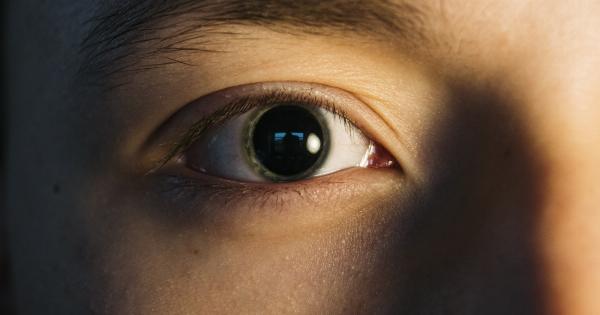Headaches are a common health problem that affects millions of people worldwide. They can range from mild annoyance to debilitating pain, and can significantly impact one’s quality of life.
While there are various causes of headaches, one often overlooked area that may contribute to headache pain is the lumbar region, or lower back. In this article, we will explore the relationship between the lumbar region and headache pain.
The Lumbar Region
The lumbar region, located in the lower back, consists of five vertebrae (L1-L5) and the discs between them. It provides support for the upper body and plays a crucial role in facilitating movement.
The lumbar region also houses the spinal cord, which transmits signals between the brain and the rest of the body.
Types of Headaches
Before delving into the link between the lumbar region and headaches, it’s important to familiarize ourselves with the different types of headaches:.
Tension Headaches
Tension headaches are the most common type of headache. They often present as a dull, aching pain on both sides of the head. Tension headaches can be triggered by stress, muscle tension, or poor posture.
Migraine Headaches
Migraines are severe headaches characterized by intense pain, sensitivity to light and sound, and nausea. They can be debilitating and may last for hours or even days. Migraines are believed to be caused by changes in brain chemicals and blood flow.
Cluster Headaches
Cluster headaches are excruciatingly painful headaches that occur in clusters or patterns. They typically cause severe pain on one side of the head, often around the eye.
Cluster headaches can be accompanied by symptoms such as red and watery eyes, nasal congestion, and restlessness.
The Lumbar Region and Headache Pain
While the lumbar region is not typically associated with headache pain, certain conditions and factors may contribute to headaches:.
Poor Posture
Poor posture, especially while sitting for prolonged periods, can strain the muscles and ligaments in the lumbar region. This strain can extend to the neck and shoulders, potentially leading to tension headaches.
Muscle Imbalances
Imbalances in the muscles surrounding the lumbar region can affect the overall alignment of the spine. This misalignment can cause tension in the neck and upper back, which may trigger headaches.
Nerve Compression
In some cases, nerve compression in the lumbar region can result in referred pain to other parts of the body, including the head. Compression of nerves can be caused by conditions such as herniated discs or spinal stenosis.
Impact on Blood Flow
The lumbar region plays a role in blood circulation, and issues in this area can affect blood flow to the head. Restricted or impaired blood flow to the brain can contribute to the development of headaches.
Preventing Headaches through Lumbar Care
Taking care of the lumbar region can potentially help prevent or alleviate headache pain:.
Ergonomic Considerations
Whether at work or home, it’s crucial to maintain good posture and use ergonomically designed furniture. Supportive chairs and proper desk height can reduce strain on the lumbar region and minimize the risk of developing headaches.
Exercise and Stretching
Regular exercise and stretching can help strengthen the muscles in the lumbar region and improve overall spinal alignment. Activities such as yoga and Pilates can be particularly beneficial in promoting flexibility and posture.
Core Strengthening
A strong core can provide stability and support to the lumbar region. Engaging in exercises that target the core muscles, such as planks and bridges, can help alleviate stress on the lower back and potentially reduce headache triggers.
Seeking Professional Help
If headache pain persists or worsens, it is essential to consult a healthcare professional.
They can evaluate the underlying causes of the headaches and provide appropriate treatment options, including physical therapy, medications, or other interventions.































